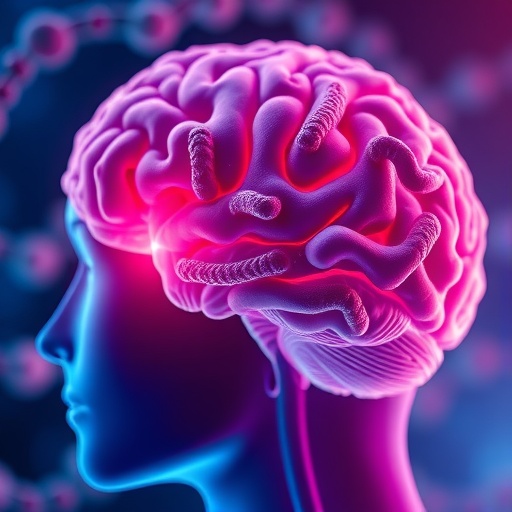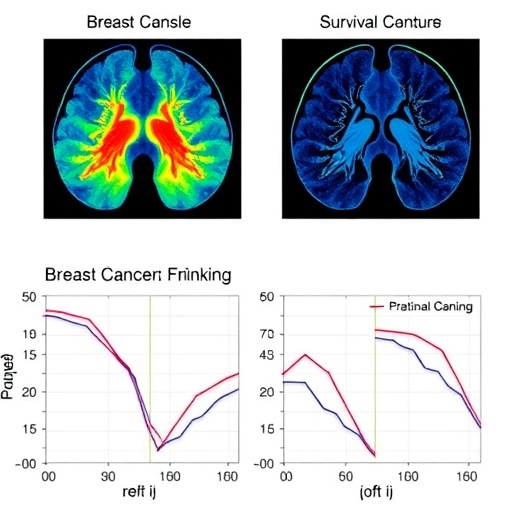
In the rapidly evolving landscape of drug discovery, the ability to predict drug–target interactions (DTIs) has emerged as a pivotal facet in the development of effective therapeutic agents. This intersection of computational biology and medicinal chemistry is being revolutionized by novel approaches, spearheaded by researchers like Mythili and Parthiban. Their recent work introduces a sophisticated model that leverages convolutional graph attention networks to enhance the accuracy of DTI predictions, thereby paving the way for more targeted and effective drug therapies.
Drug–target interaction prediction is essential for identifying suitable candidates for new pharmaceuticals. Traditionally, this process has relied on experimental methods that can be time-consuming and costly. Consequently, the scientific community has turned its focus on computational models that can reduce these bottlenecks while increasing predictive accuracy. The team led by Mythili and Parthiban recognizes that harnessing advanced machine learning techniques, particularly convolutional graph attention networks, can substantially improve the reliability of these predictions.
At the heart of their research lies the convolutional graph attention network, a type of neural network adept at handling graph-structured data. Graphs are an effective representation of biological systems where compounds can be viewed as nodes and interactions as edges. By utilizing this framework, the researchers can model complex relationships between various molecules and their biological targets. Furthermore, the attention mechanism embedded within this model empowers it to prioritize certain nodes over others, reflecting the inherent biological significance of specific molecular interactions.
An essential element of this research is the understanding that not all drug–target interactions are created equal. Certain interactions are more biologically relevant and can lead to significant therapeutic outcomes, while others may be irrelevant or even harmful. By employing convolutional graph attention networks, Mythili and Parthiban’s approach allows the model to discern which interactions are more likely to yield therapeutic benefits. This nuanced understanding forces conventional models to evolve, thereby optimizing the drug development pipeline.
The researchers gathered a diverse dataset that encompasses both well-established interactions and novel ones to train their convolutional graph attention networks. This comprehensive dataset not only enriches the learning process but also enhances the model’s generalizability across different biological contexts. Such a breadth of data allows the researchers to examine the peculiarities and complexities of DTIs that a less comprehensive dataset would likely overlook.
In their findings, Mythili and Parthiban demonstrate that their proposed model outperforms existing methodologies in predicting DTIs. The accuracy and reliability of the convolutional graph attention networks allow for better-informed decisions during the drug discovery process. By reducing false positives and false negatives in predictions, the model significantly expedites the identification of promising drug candidates, thus potentially fast-tracking the timeline for bringing new drugs to market.
Central to the success of the model is its ability to integrate various types of biological data, including structural information and biological activity. This integration is vital because biological systems are inherently complex and multifactorial. By accounting for multiple layers of information, the convolutional graph attention networks can reflect true biological interactions rather than oversimplified assumptions. This attribute highlights the underlying biological mechanisms in drug discovery, thereby inviting further investigations into less understood areas of pharmacology.
Moreover, the researchers emphasize their model’s adaptability to include additional layers of data as they become available. The flexibility of convolutional graph attention networks provides a future-proof solution for DTI prediction, allowing for continual updates and enhancements as new biological insights emerge. This aspect positions the model as a robust tool for long-term applications, which is crucial in the fast-paced field of drug development.
The increased precision in DTI prediction has profound implications for personalized medicine. With the ability to predict which drugs will interact favorably with specific biological targets, clinicians can tailor treatments to the individual characteristics of patients, enhancing therapeutic efficacy and minimizing adverse effects. As the world shifts toward more personalized approaches to healthcare, the findings from Mythili and Parthiban’s research serve as a significant stepping stone in bridging the gap between computational predictions and clinical applications.
In summary, the introduction of convolutional graph attention networks presents a transformative approach to drug–target interaction prediction. By focusing on biological relevance and leveraging advanced data integration, the model developed by Mythili and Parthiban holds immense promise for the future of drug discovery and personalized treatment. As the scientific community continues to explore the vast potential of machine learning in pharmaceuticals, studies like this one underscore the essential role of innovative methodologies in revolutionizing how we understand and develop new drugs.
As the field progresses, challenges remain in the validation and clinical application of computational predictions. The transition from bench to bedside necessitates rigorous testing and refinement of these models to ensure they meet the high standards of safety and efficacy required for human applications. Nonetheless, the advancements made in this research represent a hopeful glimpse into a future where drug discovery becomes significantly more efficient and precise.
In conclusion, Mythili and Parthiban’s work is a significant milestone in the ongoing endeavor to enhance drug development through computational methods. By embracing advanced technologies such as convolutional graph attention networks, researchers equip themselves with powerful tools to better navigate the complexities of biological interactions, ultimately leading to improved health outcomes for patients worldwide.
Subject of Research: Prediction of drug-target interactions using machine learning.
Article Title: Advanced drug–target interaction prediction using convolutional graph attention networks in expert systems.
Article References: Mythili, R., Parthiban, N. Advanced drug–target interaction prediction using convolutional graph attention networks in expert systems. Mol Divers (2025). https://doi.org/10.1007/s11030-025-11290-8
Image Credits: AI Generated
DOI: 10.1007/s11030-025-11290-8
Keywords: Drug Discovery, Drug-Target Interaction, Convolutional Graph Attention Networks, Machine Learning, Personalized Medicine.
Tags: advanced predictive modeling for pharmaceuticalscomputational biology in drug discoveryconvolutional graph attention networksdrug interaction predictiondrug-target interactionsenhancing DTI accuracygraph-structured data in biologyidentifying pharmaceutical candidatesinnovative approaches in medicinal chemistrymachine learning in pharmacologyreducing experimental bottleneckstherapeutic agent development





